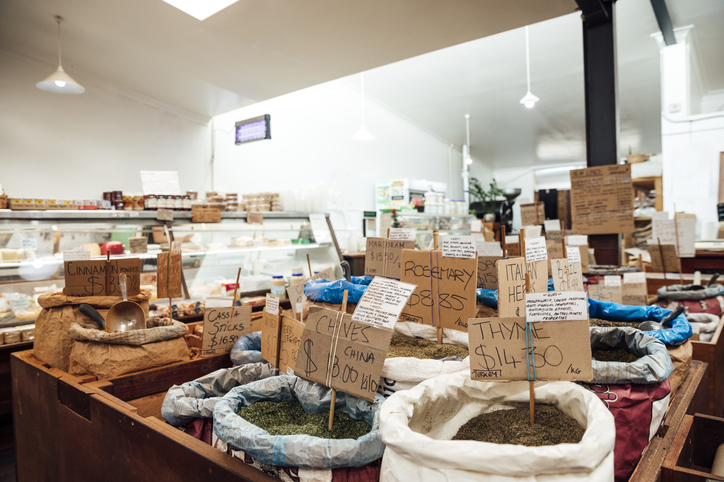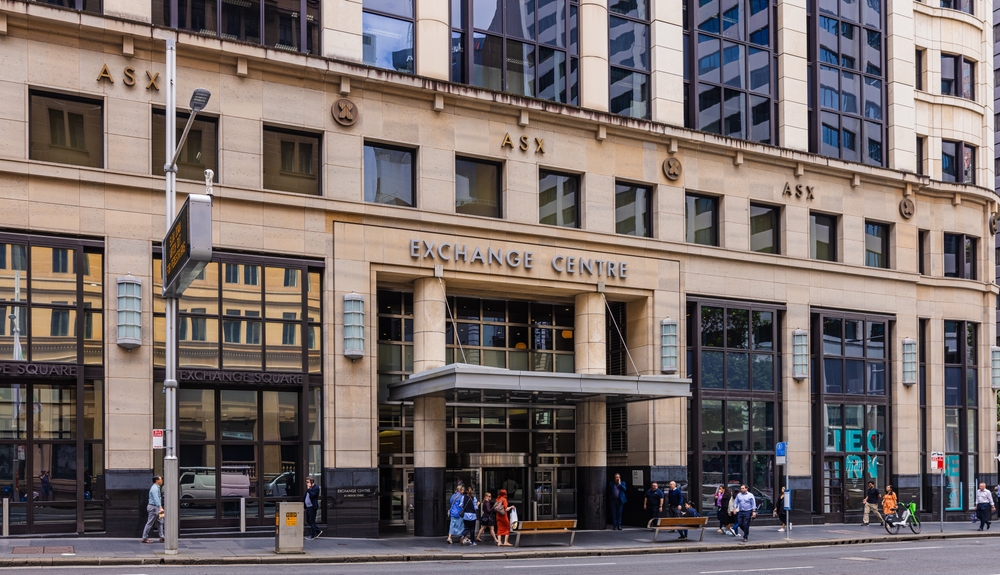Falling Food Prices Ease Upward Pressure On Global Inflation
Agricultural markets remain volatile due to war and hot weather.
Falling prices for commodities such as wheat or corn are set to slow consumer food price increases, easing pressure on a major driver of global inflation.
But economists warn it is too soon to declare victory. Agricultural markets remain volatile and the continuing war in Ukraine, combined with unusually hot and dry weather in Europe and parts of the U.S., could bring new disruptions to food supplies.
“We’ll see certainly in the short run adjustments in prices,” said Rob Vos, an economist at the International Food Policy Research Institute. “I would be very cautious in making big projections that things are stabilizing and getting better because we still are in a pretty difficult and tight situation.”
Supply problems caused by the Covid-19 pandemic sent the price of food soaring last year. Russia’s invasion of Ukraine in February of this year added additional pressure. The two countries combined accounted for 28% of global wheat exports last year and 15% of corn exports. Russia is also a major exporter of agricultural fertilizer, and Ukraine leads the world in sunflower oil exports.
The onset of the war pushed up global food prices by 13% in March from the previous month, according to the United Nations’ Food and Agriculture Organization.
Prices have edged down since, and in June, they were about 3% below March levels, though they remain higher than before the war started, according to the FAO.
Futures markets point to continued price declines. Wheat futures prices are now roughly where they were before Feb. 24, when Russia began its invasion of Ukraine. Corn prices are at their lowest level so far this year.
A recent agreement between Russia and Ukraine allowing exports of Ukrainian wheat could help cool global prices. After the agreement was signed, Russia attacked two of Ukraine’s biggest ports, Odessa and Mykolaiv, which handle much of the country’s food exports, raising doubts about Russia’s adherence to the deal.
The recent decline in commodity prices has already started to show up in consumer prices in some countries, and economists expect further moderation in coming months.
Annual food inflation in Colombia has eased from its peak in April, even though it remains historically high, according to government statistics. In Egypt, food prices fell on a monthly basis in June, the government reported.
In the U.S., Wingstop Inc., a restaurant chain, said it had started seeing falling chicken prices. “We are benefiting from meaningful deflation in bone-in wings,” said Chief Executive Officer Michael Skipworth in an earnings call.
J.P. Morgan economists now forecast global food inflation rates falling by half to around 5.5% or 6% in the fourth quarter of this year from around 13% in the second quarter.
That would make a big difference in emerging markets, where food accounts for a greater share of consumer spending than in developed economies. Easing food inflation could bring inflation down by 1.5 percentage points globally and 2 percentage points in emerging markets, J.P. Morgan estimates. That could take some pressure off central banks, many of which have been raising interest rates to bring inflation under control.
The U.S. could also see food prices moderate. Agricultural economists, though, say the effect at U.S. grocery stores could be muted. Commodities contribute only about 15% of retail food costs, with labour, shipping, packaging, advertising and profit margins contributing the rest, said Jayson Lusk, an agricultural economist at Purdue University.
Lower commodity prices “certainly can’t hurt,” he said. “From the consumers’ perspective it’s a positive sign that maybe we’ll see some downward pressure or at least a reduction in the increase.”
U.S. consumer food prices, both at grocery stores and restaurants, were up 10.4% in June from the previous year, the highest in more than four decades, according to the Labor Department. Food inflation accounted for roughly 1.4 percentage points of the 9.1% overall inflation rate in June, according to the Labor Department.
Higher prices are prompting some consumers to pull back or switch to cheaper brands. Unilever PLC and Kraft Heinz Co., which own many major food brands, both reported last week that higher commodity costs had forced them to raise prices even though that meant losing some customers.
Mr. Vos said food commodity prices are going down for the wrong reasons. Rather than signalling easing supply constraints, the price declines are a reflection of the dollar’s strength and an expectation that demand will decline as global growth cools, he said.
Since commodities are priced in U.S. dollars, a rise in the value of the dollar tends to push down the price for commodities, to offset the more expensive currency, Mr. Vos said. At the same time, central bank interest-rate increases to curb inflation have raised the risk of a global recession, he said.
On Tuesday, the International Monetary Fund lowered its forecast for global growth and raised it for inflation, as China’s Covid-19 lockdowns, rampant inflation and the war in Ukraine continue to weigh on the world economy.
“There are a few things on the horizon for me that say we may not be done with higher food prices,” said Scott Brown, an agricultural economist at the University of Missouri.
Chief among them are war and weather. Hot and dry weather in Spain, Italy and parts of the U.S. will lower rice production next year, the U.S. Department of Agriculture estimates, which could raise rice prices.
The agency says global wheat and corn production will fall by 1% and 2.6%, respectively, next year. Ukraine will see its wheat output fall 41% and its exports by almost half, according to the USDA.
“There are just so many uncertainties or unknowns right now, if I was a consumer I’d expect a lot of volatility in food prices ahead,” Mr. Brown said.
 Copyright 2020, Dow Jones & Company, Inc. All Rights Reserved Worldwide. LEARN MORE
Copyright 2020, Dow Jones & Company, Inc. All Rights Reserved Worldwide. LEARN MORE
This stylish family home combines a classic palette and finishes with a flexible floorplan
Just 55 minutes from Sydney, make this your creative getaway located in the majestic Hawkesbury region.
Continued stagflation and cost of living pressures are causing couples to think twice about starting a family, new data has revealed, with long term impacts expected
Australia is in the midst of a ‘baby recession’ with preliminary estimates showing the number of births in 2023 fell by more than four percent to the lowest level since 2006, according to KPMG. The consultancy firm says this reflects the impact of cost-of-living pressures on the feasibility of younger Australians starting a family.
KPMG estimates that 289,100 babies were born in 2023. This compares to 300,684 babies in 2022 and 309,996 in 2021, according to the Australian Bureau of Statistics (ABS). KPMG urban economist Terry Rawnsley said weak economic growth often leads to a reduced number of births. In 2023, ABS data shows gross domestic product (GDP) fell to 1.5 percent. Despite the population growing by 2.5 percent in 2023, GDP on a per capita basis went into negative territory, down one percent over the 12 months.
“Birth rates provide insight into long-term population growth as well as the current confidence of Australian families,” said Mr Rawnsley. “We haven’t seen such a sharp drop in births in Australia since the period of economic stagflation in the 1970s, which coincided with the initial widespread adoption of the contraceptive pill.”
Mr Rawnsley said many Australian couples delayed starting a family while the pandemic played out in 2020. The number of births fell from 305,832 in 2019 to 294,369 in 2020. Then in 2021, strong employment and vast amounts of stimulus money, along with high household savings due to lockdowns, gave couples better financial means to have a baby. This led to a rebound in births.
However, the re-opening of the global economy in 2022 led to soaring inflation. By the start of 2023, the Australian consumer price index (CPI) had risen to its highest level since 1990 at 7.8 percent per annum. By that stage, the Reserve Bank had already commenced an aggressive rate-hiking strategy to fight inflation and had raised the cash rate every month between May and December 2022.
Five more rate hikes during 2023 put further pressure on couples with mortgages and put the brakes on family formation. “This combination of the pandemic and rapid economic changes explains the spike and subsequent sharp decline in birth rates we have observed over the past four years,” Mr Rawnsley said.
The impact of high costs of living on couples’ decision to have a baby is highlighted in births data for the capital cities. KPMG estimates there were 60,860 births in Sydney in 2023, down 8.6 percent from 2019. There were 56,270 births in Melbourne, down 7.3 percent. In Perth, there were 25,020 births, down 6 percent, while in Brisbane there were 30,250 births, down 4.3 percent. Canberra was the only capital city where there was no fall in the number of births in 2023 compared to 2019.
“CPI growth in Canberra has been slightly subdued compared to that in other major cities, and the economic outlook has remained strong,” Mr Rawnsley said. “This means families have not been hurting as much as those in other capital cities, and in turn, we’ve seen a stabilisation of births in the ACT.”
This stylish family home combines a classic palette and finishes with a flexible floorplan
Just 55 minutes from Sydney, make this your creative getaway located in the majestic Hawkesbury region.






















